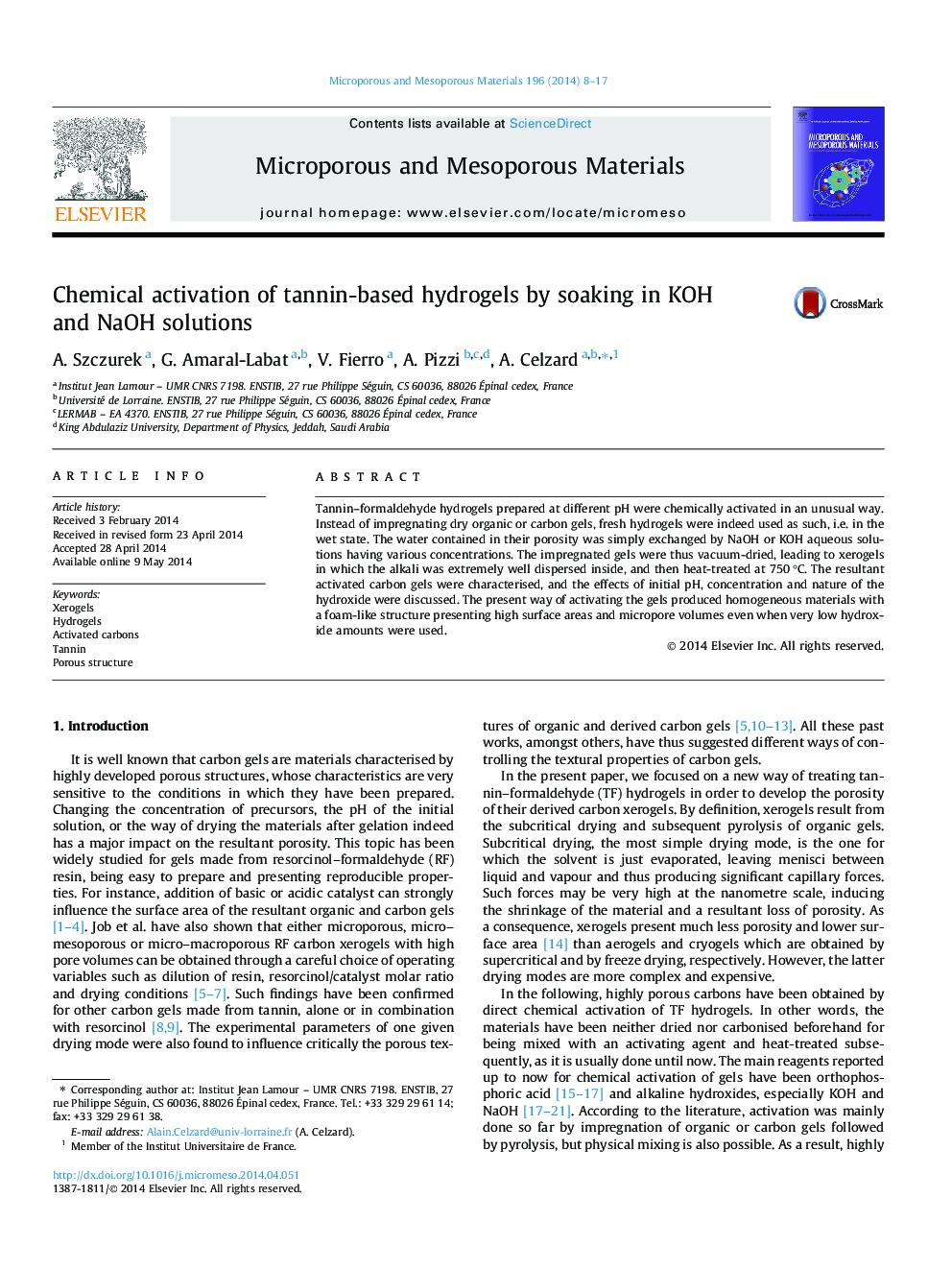| Article ID | Journal | Published Year | Pages | File Type |
|---|---|---|---|---|
| 72983 | Microporous and Mesoporous Materials | 2014 | 10 Pages |
•Tannin–formaldehyde hydrogels were directly activated chemically for the first time.•Exchange of water by aq. NaOH/KOH led to very homogeneous activated carbons.•High surface areas were obtained even with very low amounts of activating agent.•They presented a foam-like structure without impact of the gels’ preparation pH.
Tannin–formaldehyde hydrogels prepared at different pH were chemically activated in an unusual way. Instead of impregnating dry organic or carbon gels, fresh hydrogels were indeed used as such, i.e. in the wet state. The water contained in their porosity was simply exchanged by NaOH or KOH aqueous solutions having various concentrations. The impregnated gels were thus vacuum-dried, leading to xerogels in which the alkali was extremely well dispersed inside, and then heat-treated at 750 °C. The resultant activated carbon gels were characterised, and the effects of initial pH, concentration and nature of the hydroxide were discussed. The present way of activating the gels produced homogeneous materials with a foam-like structure presenting high surface areas and micropore volumes even when very low hydroxide amounts were used.
Graphical abstractFigure optionsDownload full-size imageDownload as PowerPoint slide
